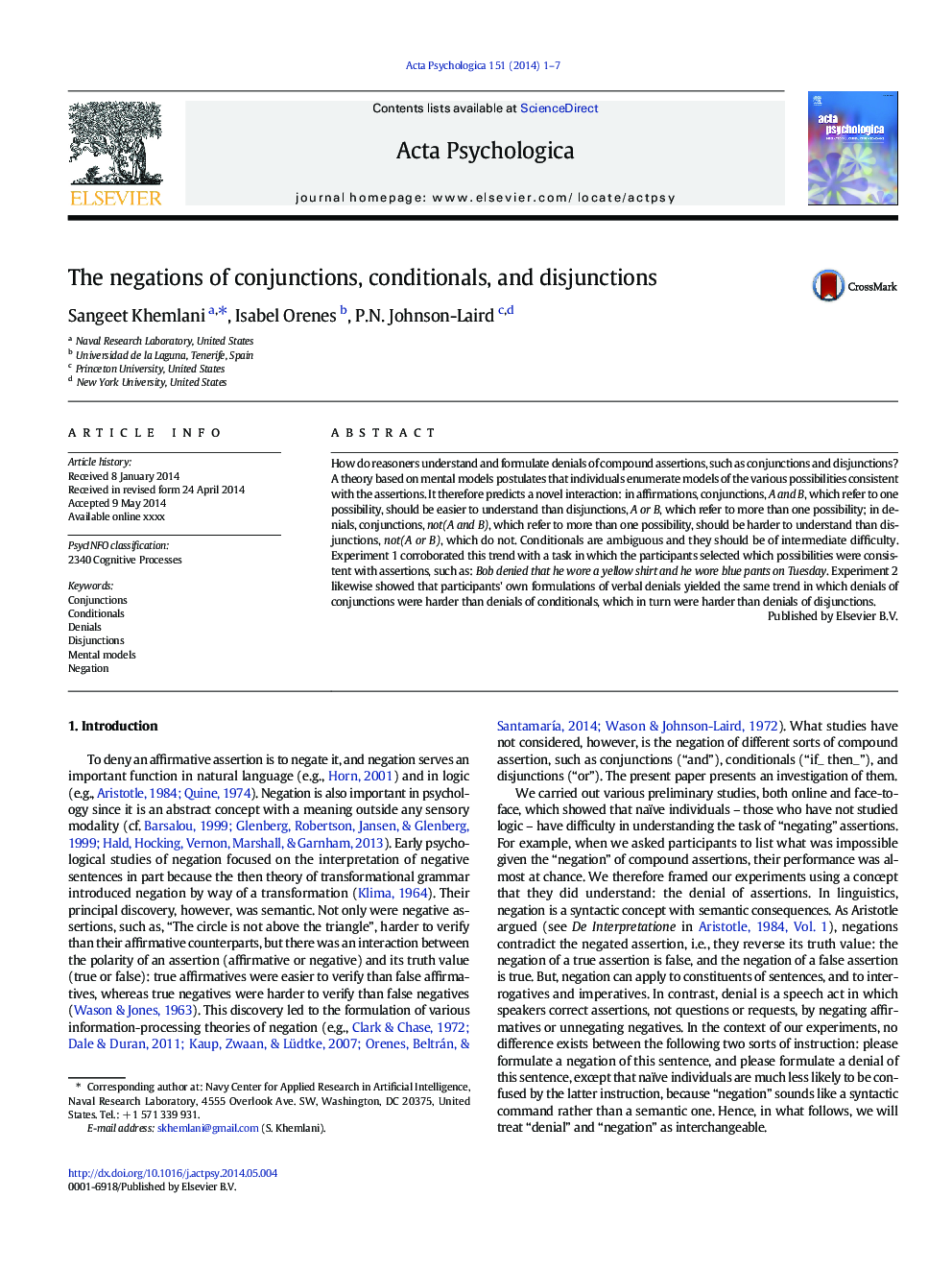| Article ID | Journal | Published Year | Pages | File Type |
|---|---|---|---|---|
| 7277523 | Acta Psychologica | 2014 | 7 Pages |
Abstract
How do reasoners understand and formulate denials of compound assertions, such as conjunctions and disjunctions? A theory based on mental models postulates that individuals enumerate models of the various possibilities consistent with the assertions. It therefore predicts a novel interaction: in affirmations, conjunctions, A and B, which refer to one possibility, should be easier to understand than disjunctions, A or B, which refer to more than one possibility; in denials, conjunctions, not(A and B), which refer to more than one possibility, should be harder to understand than disjunctions, not(A or B), which do not. Conditionals are ambiguous and they should be of intermediate difficulty. Experiment 1 corroborated this trend with a task in which the participants selected which possibilities were consistent with assertions, such as: Bob denied that he wore a yellow shirt and he wore blue pants on Tuesday. Experiment 2 likewise showed that participants' own formulations of verbal denials yielded the same trend in which denials of conjunctions were harder than denials of conditionals, which in turn were harder than denials of disjunctions.
Related Topics
Life Sciences
Neuroscience
Cognitive Neuroscience
Authors
Sangeet Khemlani, Isabel Orenes, P.N. Johnson-Laird,
